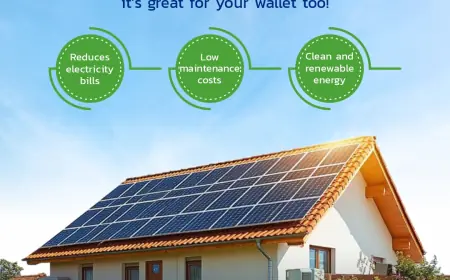Automotive Tubeless Tires Market Share, Scope & Trends Analysis by Fact MR
The global automotive tubeless tires market was valued at US$ 393.91 billion in 2022. Over the forecast period from 2022 to 2032, the market is projected to grow at an impressive 7.6% CAGR, reaching a valuation of US$ 819.45 billion by 2032.

The global automotive tubeless tires market was valued at US$ 393.91 billion in 2022. Over the forecast period from 2022 to 2032, the market is projected to grow at an impressive 7.6% CAGR, reaching a valuation of US$ 819.45 billion by 2032.
The automotive tubeless tires market has witnessed significant growth over the years, driven by advancements in tire technology and increasing demand for safer, more efficient vehicles. Unlike traditional tube-type tires, tubeless tires do not have an inner tube, reducing the risk of sudden air loss and improving overall safety. These tires offer several advantages, including better fuel efficiency, enhanced durability, and reduced rolling resistance, making them a preferred choice among vehicle manufacturers and consumers. The growing automotive industry, coupled with rising consumer awareness regarding vehicle safety and performance, has fueled the adoption of tubeless tires across various vehicle segments, including passenger cars, commercial vehicles, and motorcycles.
Get Free Sample Copy of This Report-https://www.factmr.com/connectus/sample?flag=S&rep_id=103
Future Outlook
The future of the automotive tubeless tires market looks promising, with increasing investments in research and development aimed at enhancing tire performance and longevity. Manufacturers are focusing on the development of advanced materials, such as silica-based compounds and reinforced rubber, to improve traction, fuel efficiency, and wear resistance. The shift towards electric vehicles (EVs) is also influencing the tubeless tire market, as EVs require specialized tires that offer low rolling resistance and enhanced durability. Additionally, the integration of smart tire technologies, such as real-time pressure monitoring systems (TPMS) and self-sealing capabilities, is expected to further drive market growth. As governments worldwide implement stringent regulations on fuel efficiency and emissions, the demand for high-performance, eco-friendly tubeless tires is likely to rise in the coming years.
Market Demand
The demand for tubeless tires is steadily increasing, driven by factors such as urbanization, improved road infrastructure, and the rising preference for personal vehicles. Consumers are increasingly opting for tubeless tires due to their ability to withstand punctures, provide a smoother ride, and offer longer tread life. Additionally, fleet operators in the commercial vehicle segment are transitioning to tubeless tires to reduce downtime and maintenance costs. The two-wheeler segment is also contributing significantly to market demand, as motorcycle manufacturers integrate tubeless tires as a standard feature for enhanced safety and performance. With automakers and tire manufacturers emphasizing lightweight and fuel-efficient designs, the global demand for tubeless tires is expected to surge further.
List of Key Companies Profiled in The Report
- Bridgestone Corporation
- Michelin North America Inc.
- The Goodyear Tyre & Rubber Company
- The Yokohama Rubber Co., Ltd
- Others
Market Opportunities
The market presents several growth opportunities, particularly in emerging economies where vehicle ownership is rising rapidly. Countries in Asia-Pacific, Latin America, and Africa are witnessing a boom in automobile sales, creating a strong demand for tubeless tires. Additionally, the aftermarket segment offers lucrative opportunities as vehicle owners increasingly replace conventional tube tires with tubeless alternatives. The rise of electric and autonomous vehicles is another significant factor shaping the future of the tubeless tire industry. Innovations such as airless tires, run-flat technology, and smart tires with embedded sensors present new avenues for market expansion. Collaborations between automakers and tire manufacturers to develop region-specific and weather-resistant tubeless tires are also expected to fuel market growth.
Recent Industry News
The automotive tubeless tires industry has seen numerous developments, with leading tire manufacturers investing in new technologies and expanding their production capacities. Several companies have launched next-generation tubeless tires with improved tread designs and reinforced sidewalls to enhance durability and performance. Sustainable manufacturing practices are gaining traction, with major tire brands focusing on reducing carbon emissions and utilizing eco-friendly raw materials such as natural rubber and recycled components. Additionally, partnerships between automakers and tire manufacturers are resulting in customized tire solutions for electric and hybrid vehicles. The growing adoption of smart tires with embedded sensors for real-time monitoring of pressure and wear is another major trend shaping the industry.
Notable Developments
Recent innovations and advancements in the tubeless tire market have significantly enhanced product offerings and performance. Leading manufacturers are focusing on self-sealing tire technology, which enables tires to seal small punctures automatically, reducing the need for immediate repairs. The development of airless or non-pneumatic tires, which eliminate the risk of flats and blowouts, is also gaining momentum. Additionally, companies are exploring sustainable alternatives by incorporating bio-based and recycled materials into tire production. The expansion of tire manufacturing facilities in key regions, along with strategic collaborations between technology firms and tire producers, is expected to drive further market growth. As the automotive industry continues to evolve, tubeless tire manufacturers are likely to play a crucial role in shaping the future of mobility.
Competitive Landscape
Leading players in the automotive tubeless tires industry are capitalizing on the rising demand by expanding their market presence through collaborations, partnerships, and acquisitions. These strategies help companies strengthen their foothold across various applications.
In October 2021, Apollo Tyres introduced a new range of tires under its Dutch brand Vredestein in India, targeting luxury cars and high-performance bikes. This move aims to establish dominance in the luxury car tire segment. In June 2021, Michelin launched the MICHELIN Primacy 4ST tires in India, featuring an advanced tread pattern for superior wet grip and next-generation Silent Rib Technology for enhanced comfort and reduced noise.
What's Your Reaction?
 Like
0
Like
0
 Dislike
0
Dislike
0
 Love
0
Love
0
 Funny
0
Funny
0
 Angry
0
Angry
0
 Sad
0
Sad
0
 Wow
0
Wow
0



















































